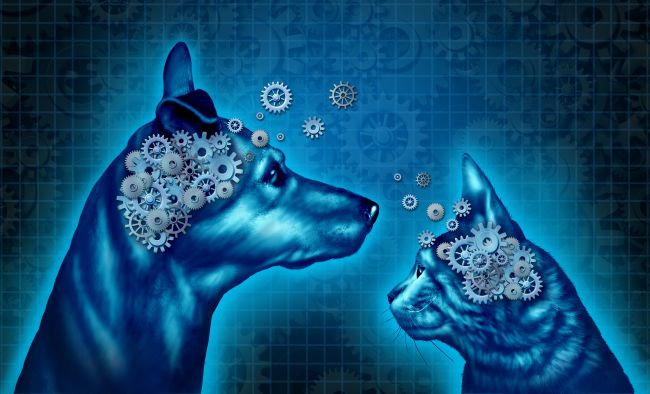
No matter how cuddly and adorable a dog might be, or how loved they are by their owners, all animals have innate instincts from the days when they were running free in the wild. In the natural world, dogs and cats will growl, hiss, scratch, or bite when they are cornered, threatened, hurt, frightened or vying for authority or provisions. Though they have been domesticated for centuries and regularly undergo behavioral training, there are still instances when a dog or cat’s protective instincts manifest in hostile and even dangerous ways. Below are some of most common negative behaviors expressed by dogs and cats.
Aggressive Behaviors in Cats: Felines have different ways of showing frustration or agitation. Some breeds tend to be feistier than others. For example, a Singapura cat might retaliate quicker than the relaxed Ragdoll when provoked. Some of the most common aggressive actions might include nipping during playtime, biting, chewing on limbs, random scratch-attacks, hissing and growling, pouncing, and batting. Certain things trigger these aggressive behaviors, such as unpredictable movements from someone, rough housing, threatening motions, etc. Whenever a cat is afraid or uncertain of what is happening, he will be more likely to attack.
Aggressive Behaviors in Dogs: Dogs react poorly based on several distinct types of canine aggression. Among these motivations are: displacement, dominance, fear and pain-elicited aggression, predatory aggression, maternal instincts, objection passiveness & territorial inclinations, and learned aggression (such as “attack” commands and other defensive training methods).
Destructive Behaviors in Dogs: Some undesirable traits and actions do not occur because a dog is an unruly or naughty pet, nor when he is acting defensively. Often canines exhibit unwanted actions when they are bored, have excessive energy, feel lonely, nervous, or are when they are just puppies with new teeth coming in. Actions of this nature generally include digging, foraging, escaping, chewing, scratching, and urinating indoors. Such destructive habits can easily be righted with new toys, exercise, activities, boundaries and some obedience training.
Predatory Drift: As canines are natural hunters and chasers, it is unsurprising that predatory instincts kick in. When large dogs are surrounded by helpless little animals (such as cats, bunnies, or small puppies) that run away from them, or squeal like prey in the wild, the dog might respond by chasing, nipping or biting them.
Attacks on children: Protective hounds such as German Shepherds, Rottweilers and Siberian Huskies have lots of energy and aggressive instincts that make them less patient with accident prone, small children. Though these breeds are prized as police dogs, hunters, trackers and rescue-mission pups, they tend to be more likely to bite children than other dogs.
Why Dogs and Cats Bite/Scratch: Understand the actions that lead to such defensive responses from dogs and cats. Observant people will note the warnings these pets show through their body language and tail posture and through their vocal warnings. Noting the signs, and learning what causes cats and dogs to react this way will help avoid the aggressive behaviors in the future.
NOTE: If you own a dog breed inclined towards potentially dangerous behavior, such as the American Pit Bull Terrier or the Rottweiler, it is your duty to society to see that he is properly trained in obedience, and restrained with the proper leashes and collars when brought in public. Countless civilian attacks have occurred when irresponsible pet owners have failed to take these protective measures.

